The Retro Setup
I've been living in a basement since 2019, after living most of my life in small rooms with not much space to do anything. But in 2023, I realized I had a big gap between my computer desk and my bed where a couch & TV could go. And thus
(Click images to see them in full size)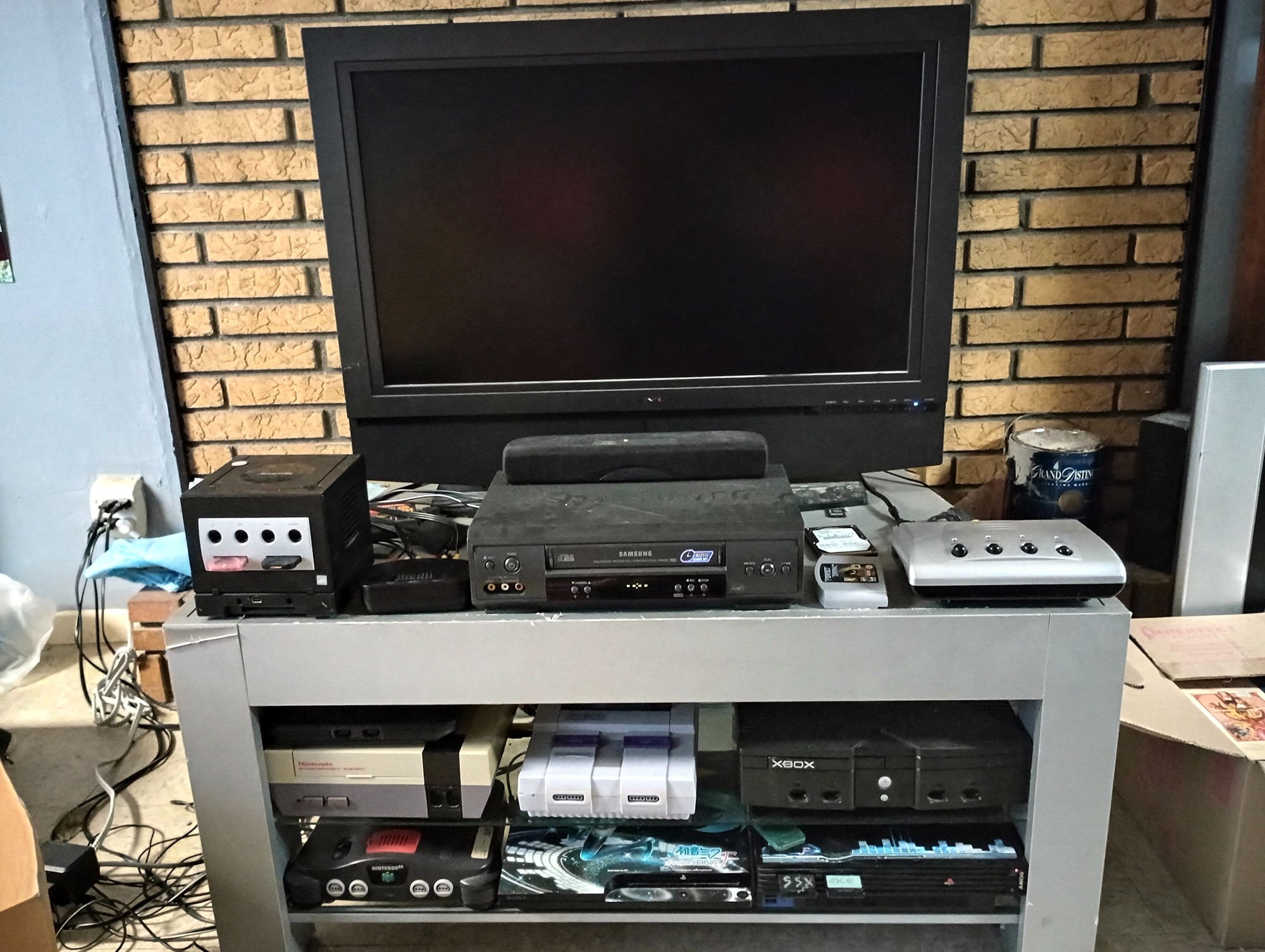
The Retro Setup was born.
The Breakdown
Everything in this image is plugged into an old Olevia LCD TV I inherited from my dad. I wanted a CRT, and I even had a CRT planned. But it was heavy, bulky, I couldn't get it into the basement, and I literally threw my back out trying. But the more I thought about it, the more I preferred the mid-2000s LCD flatscreen. It's lighter, takes up less space, draws less power, doesn't generate heat, and most importantly it has at least one of every analog input known to man. I recommend watching Any Austin's video on his CRT if you're hung up on being authentic.
All of these systems are either softmodded or are equipped with flashcarts, allowing me to play whatever I want on their respective console.
Atop the Stand
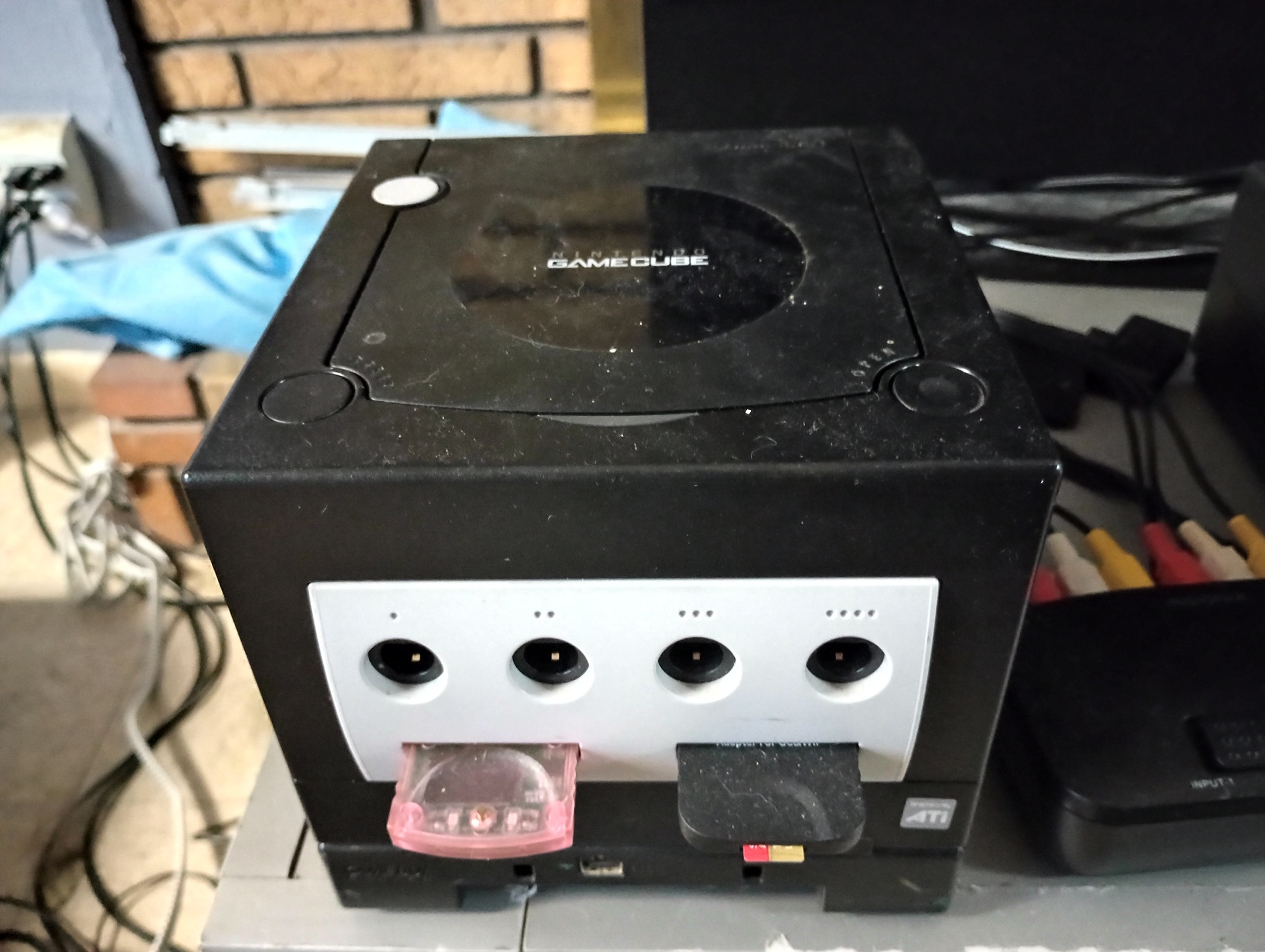
On the far left is my GameCube & Game Boy Player. I estimate getting the console in 2005, late in the console's life cycle, so it doesn't have a component port. But that's okay, it's plugged in with S-video.
What's not okay is the laser is dying. So it takes a few tries to read a disc; and by extension, load games through its memory card with a Swiss exploit. There are ways to replace the laser with an SD card slot, but I'm counting more on exploits through its unused network port on the bottom. I try to avoid hard-modding consoles if I can help it.
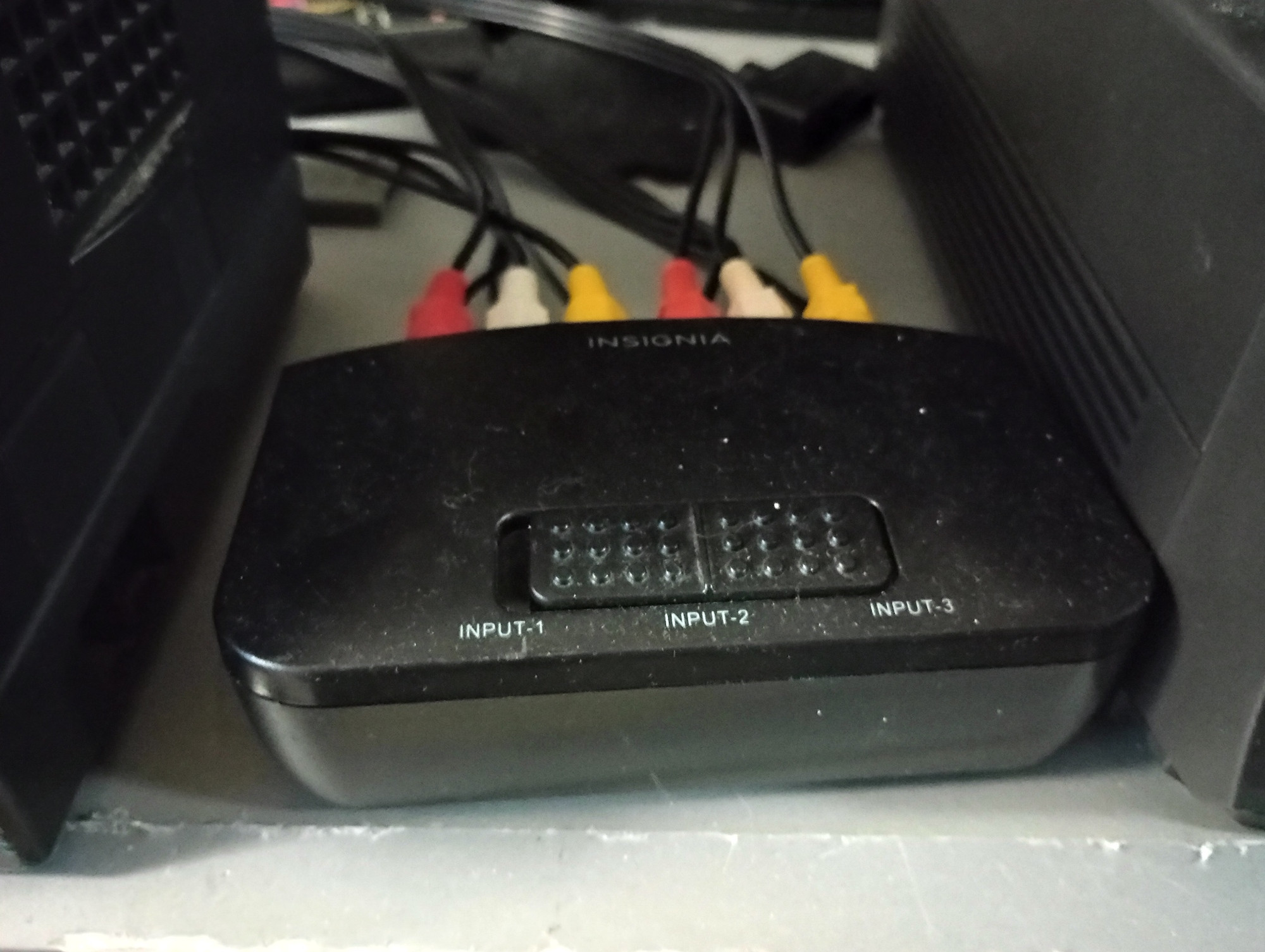
Next to the GameCube is a Composite switch. Not everything in the setup works with S-Video, so I have to fall back on Composite. I have a three-way splitter for the three systems here that use it.
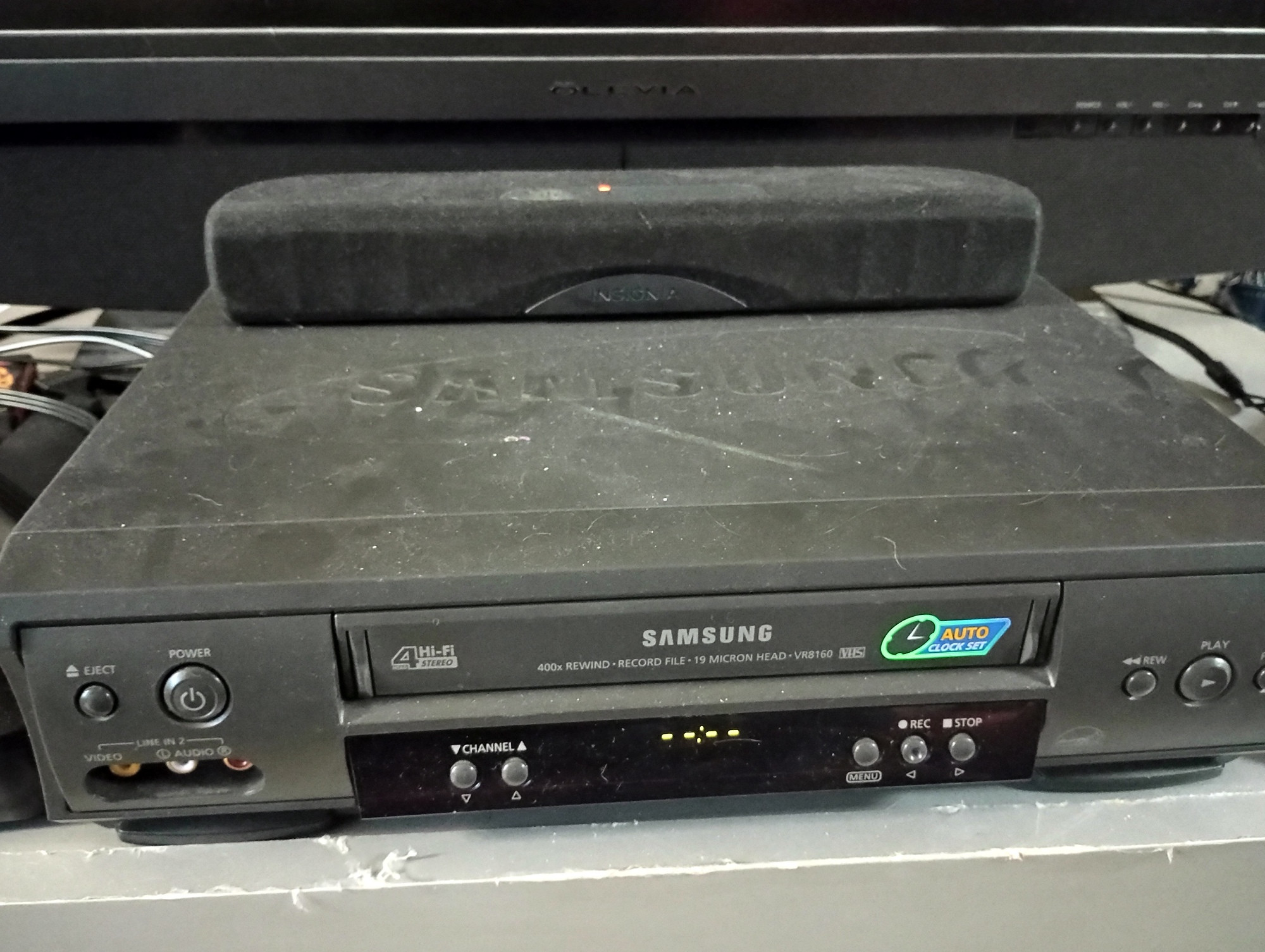
In the middle I have a VCR, and a small soundbar on top of it. The downside to modern flatscreens is their sound quality isn't great, so I gotta use an external speaker for better listening. The VCR doesn't have a remote or a pause button, and it screams in pain when you rewind, so I had to buy a separate tape rewinder. But it works great otherwise and I do use it on occasion. I might write a separate page for movies worth watching on tape someday.
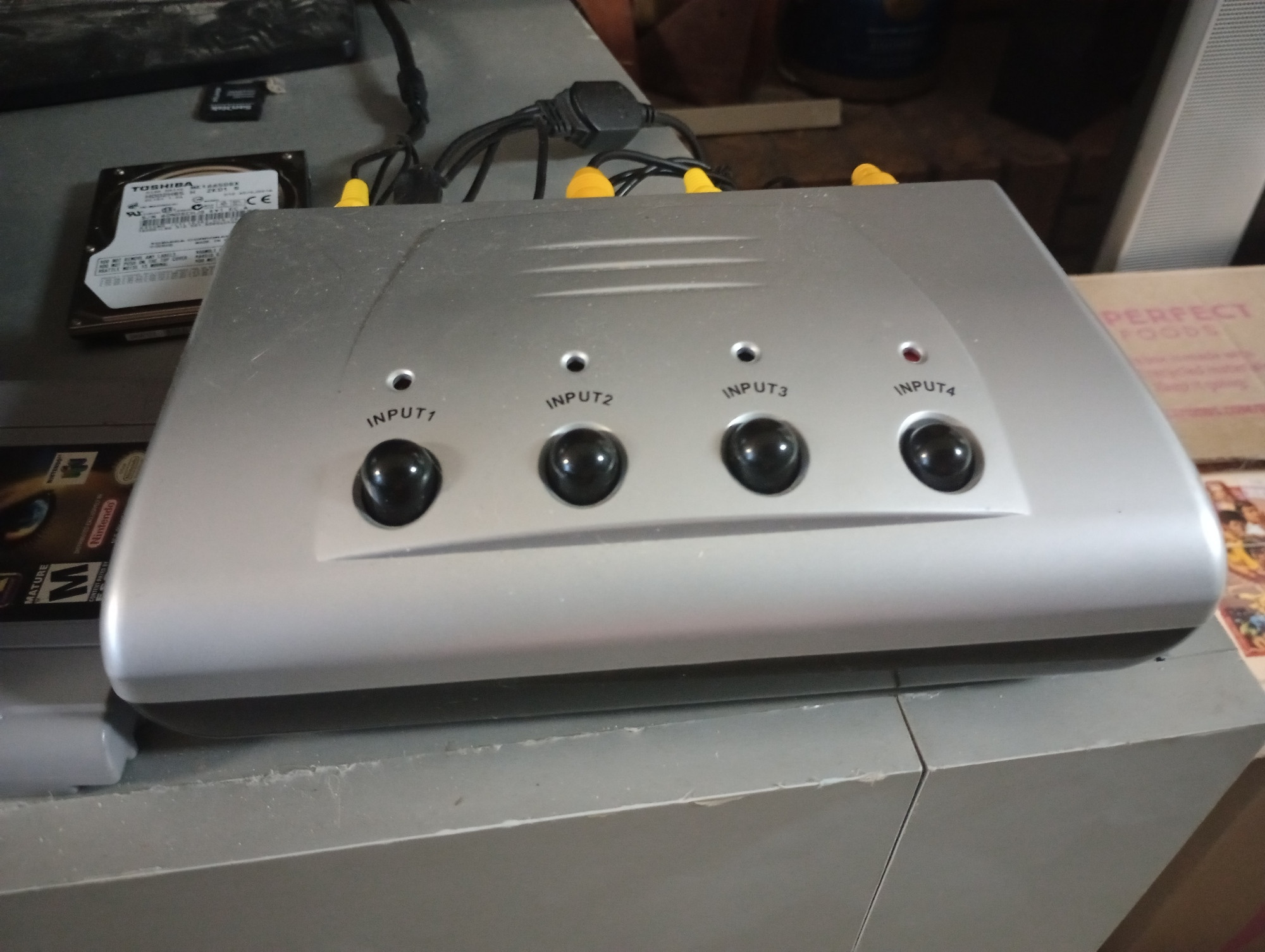
On the other end of the VCR is a four-way S-Video switch, also inherited from my dad. There's a debate as to whether S-Video or Component gives a better analog signal, to which I... don't really have an opinion. But this switch has more S-Video ports than Component ports, so my position is more on practicality than quality
The Top Shelf
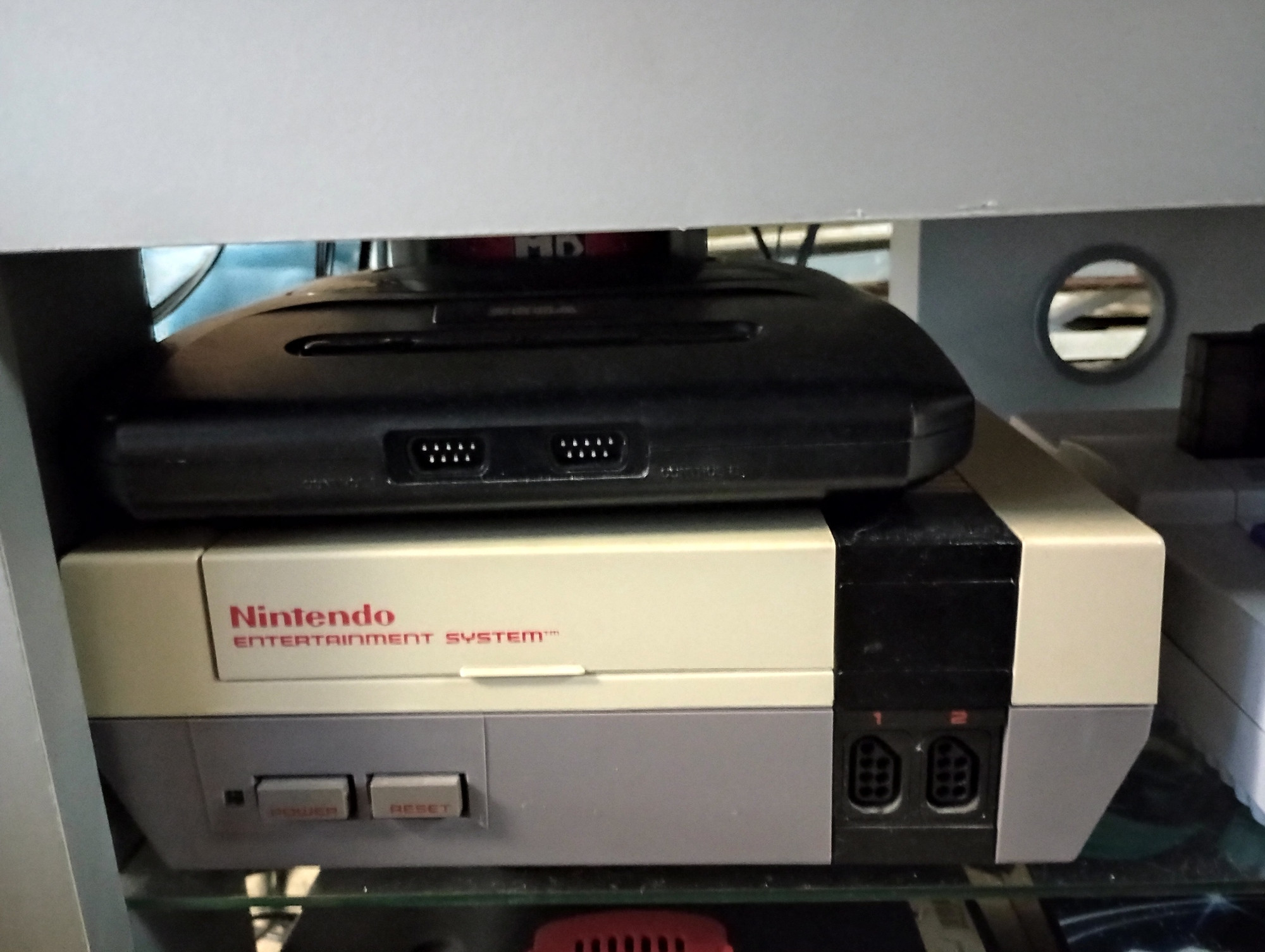
The left of the stand's top shelf features an original model NES. Why not a toploader? Well, two reasons. First is the toploader doesn't have a composite output. It's coaxial only, and this TV is finicky about channel recognition. Second is there's a Sega Genesis sitting on top of it, which wouldn't fit if it wasn't a toploader.
The Genesis is lucky. Since it just barely doesn't cover the vents on the NES, it's found a home sitting on top of it. The system is also plugged in by composite.
These are the only two consoles using Everdrive carts. Everything else is a cheaper alternative flashcart.
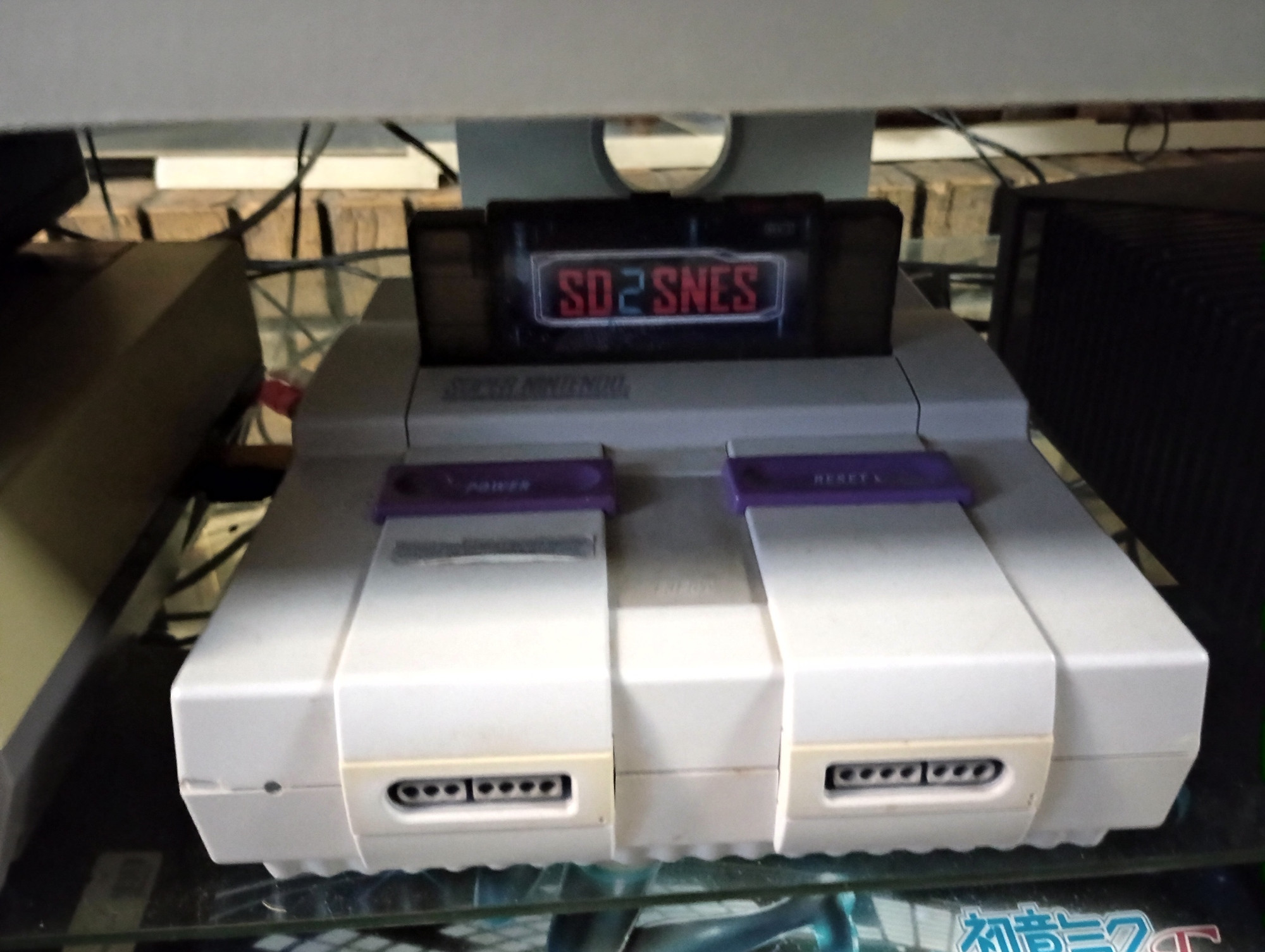
Next to that is a Super Nintendo! I originally bought a SNES Jr for this setup, and I still have it, but I found out too late that the Jr doesn't have S-Video support like its older brother. So I had to buy an original model, albeit much cheaper since I didn't need cables or a controller. The SNES is unique in that it shares an S-Video multi-cable with the Xbox next to it.
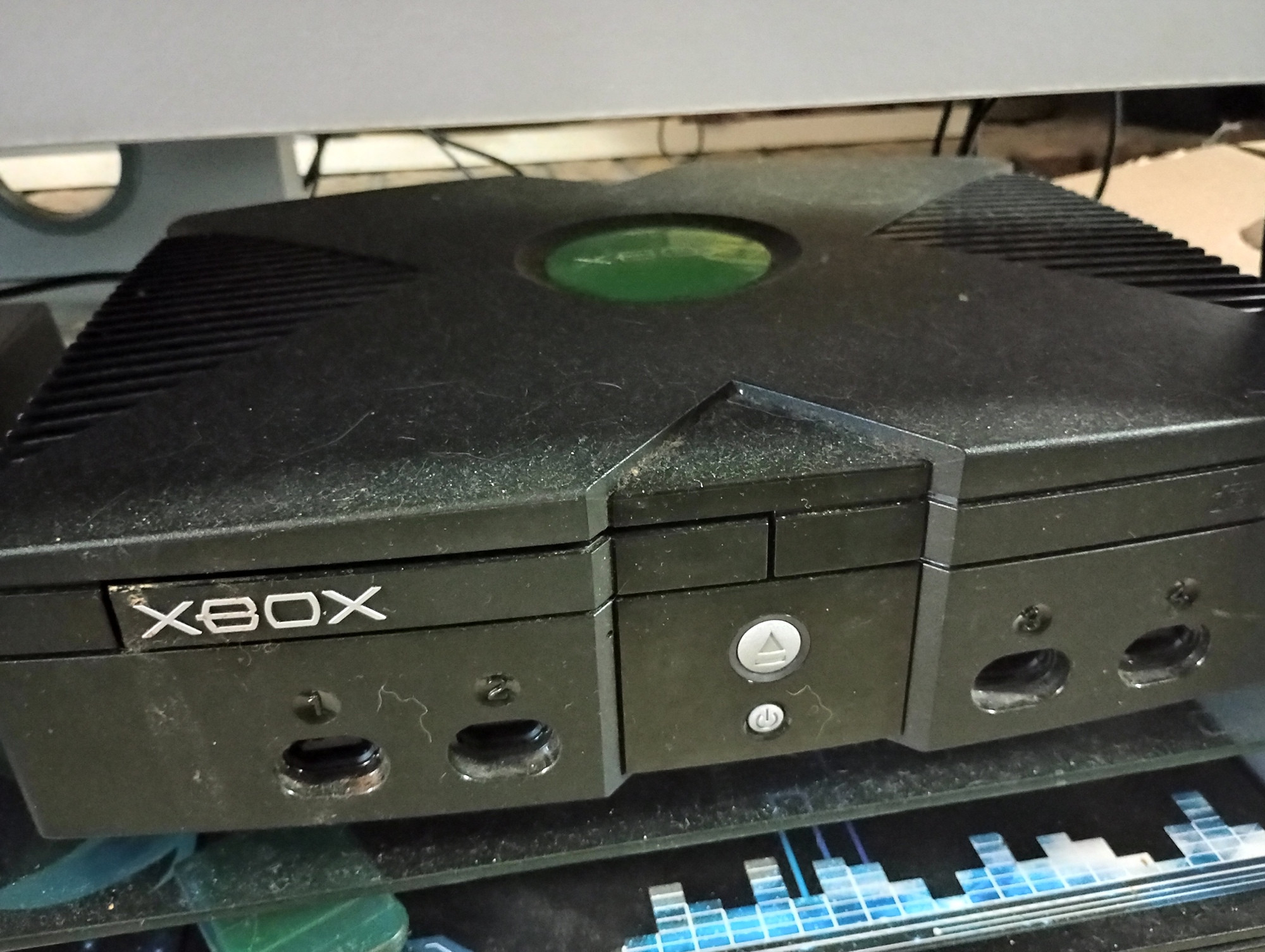
Xbox, oh Xbox. An unholy abomination. This system has caused me more problems in softmodding than any other in my library. I initially jailbroke it to try the fan-run Xbox Live servers, which didn't work. Then I bricked it trying to help a streamer with its region locking, and needed to buy three different IDE adapters before I found one that could read the damn drive to fix it. I've vowed never to do any further homebrew on this console, and haven't even powered on since going through that mess. This console is most likely to be replaced in the setup.
The Bottom Shelf
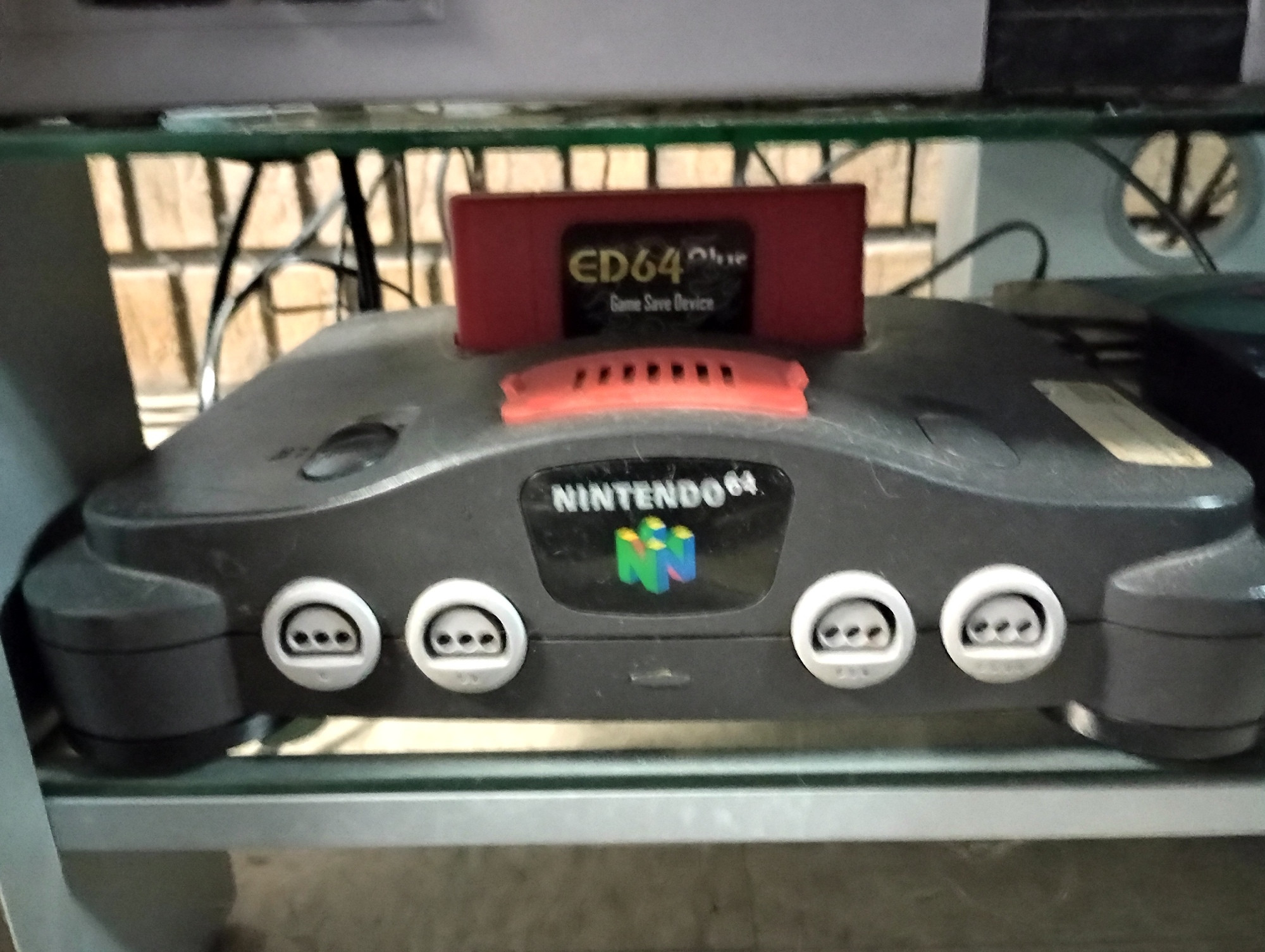
the bottom-left of the stand houses my Nintendo 64. I had an issue recently where the system was rebooting itself on its own, which can mean any number of things; from the cartridge, to the memory expansion, to the system itself. But I tried it again recently and it works... fine? Dunno what was up with that. But since then I've been kinda hesitant to do anything with it. I'm sure I'll use it to play through Paper Mario someday.
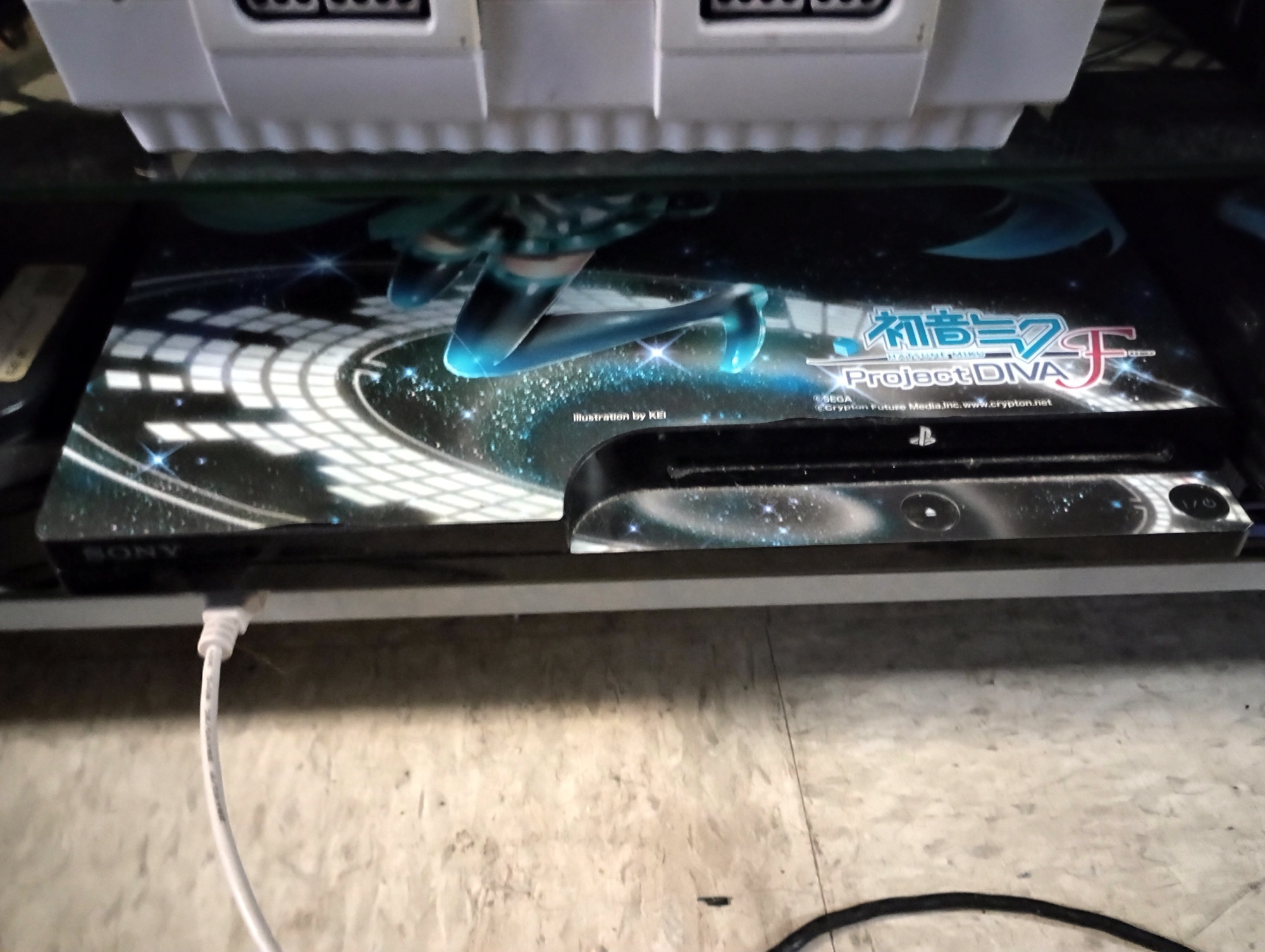
Now I know what you're thinking, why is there a PS3 in your retro setup? The PS3 isn't retro! Well first, I hate to disappoint you, but the PS3 fell under the retro line in 2021. But second, it's honestly there for PS1 games more than anything. Contrary to popular belief, every model of PS3 can read PS1 discs, and it's easier to mod a PS3 than it is to mod a PS1. This is the only system in the setup utilizing HDMI.
I do use it for PS3 games on occasion, but most of that generation's games are either available on PC, or backwards compatible on Xbox One; where I can play them in 4K and sometimes 60FPS. But not everything was multi-platform, so the PS3 does still have use as a PS3.
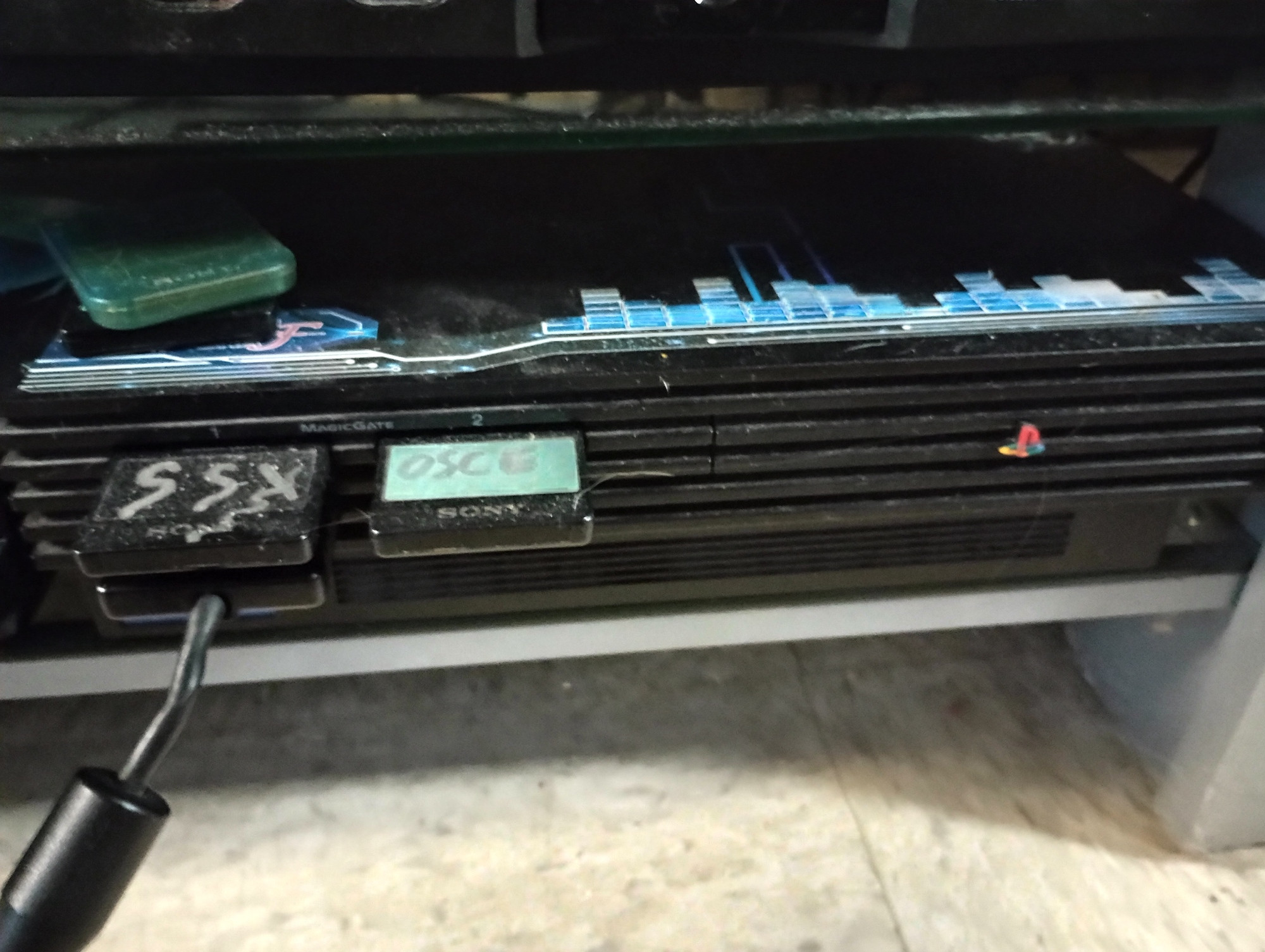
The last system in the retro setup is my PS2, and oh no I can hear them again. Why not use the PS2 for PS1 games? And I actually have two answers for that. The first is my PS2's laser is too old to read CDs. I have another PS2 that can read CDs, but the disc tray sticks and needs to be lightly banged on to open. The second reason though is the PS2 has a hard drive plugged into it, and for some reason the system uses the same chip for both reading that drive and running PS1 games. So the system is hard-coded to lock out that drive and its USB ports whenever it attempts to load a PS1 game.
Something that sucks about the softmodded PS2 is it's probably the lowest authenticity in the whole setup. I have to consult a spreadsheet for each individual game I play to make sure nothing goes wrong, and even then it can end up performing worse than running off a disc, or even just emulating. The homebrew is in a painful state of good enough, being technically functional but never really improving.
The PS2 is also noteworthy in that it can't share any multi-plug cables like the SNES & Xbox are doing. It's a selfish bastard and hoards the audio outputs all to itself. You can cut the power off with a hard shutoff switch on the back, but it's easier to just let it have its own cable.
The Future
I can think of two things I'd change about this setup in the future.
First is a bigger 2000s-era TV. Not just for the larger screen, but also for more ports. You can see a Sharp Aquos cropped out to the right of the first image, that's my childhood TV that sadly doesn't work anymore. I had it brought over from across state lines before finding that out. I tried looking up guides on fixing it, and pretty much every guide I found said don't bother, it's too old.
The second thing I'd change is getting a new stand. I don't want to cram more systems in, but I kinda want space for rotation on systems I don't use that often. I have a Dreamcast disconnected that doesn't fit anywhere in the setup as it stands. We'll see what the future brings.
Appendix FAQ
Do you really have to explain the composite switches?
People ask me about them every time I share this setup, so yes.
How do you softmod a system?
Depends on the system. Here's a guide for GameCube, here's a guide for PS2, and here's a guide for PS3. The Xbox is an unholy nightmare to softmod and I recommend it to nobody.
What's wrong with modding the Xbox?
The biggest wall in a softmodded Xbox is you really can't get anything out of it without replacing the hard drive, and it's not as simple as swapping one for another. You need a drive that can be locked, a special board to clone the stock drive over, and a hotswap with the DVD drive's plug that has a less-than 10-second window. Plus given the Xbox's considerably smaller line of noteworthy exclusives, you're probably better off using a PS2 or a GameCube to play most of its library.
The good news is Xbox 360 modding has taken great strides as of late, drastically improving its base Xbox emulation by backporting the updated Xbox One/Series X files. Check it out!
Where do you get your flashcarts?
I just grabbed all my carts from Ebay. Everdrive was way too expensive and there are tons of cheaper alternatives. Just gotta keep your ear to the ground to find them.
Why not use a Retron/Raspberry Pi?
I did for a while. Before the setup I used a Retron 2 HD in the living space around my desk, but I ran into a weird problem when building the setup. On my Olevia TV, and only the Olevia TV, the Retron 2's analog output displayed in black & white. HDMI looked fine, the composite on my 4K TV looked fine, but this one LCD flatscreen just would not display color.
So I bought a Retron 3 AV, which is exclusively composite output, and that had the same issue! But... only on NES. It looked fine on SNES & Genesis, and again it looked fine through composite on my 4K TV. At that point I could either buy a Retron 1 to see if that displayed properly, or I could just buy a real NES. I went with the latter, just so I could say I owned the real hardware even if it didn't work. But it did work, so now it's a permanent addition.
Before the retrons I used a Raspberry Pi in 2017, when my room was too small for my consoles. In 2019 I switched it out for a Steam Link, which was a lot more practical & open-ended than a tiny emulation box. That was a good call, since a couple years later the RasPi foundation donated a bunch of boards to cops so they could build drones, and I've boycotted them ever since.
What about an FPGA or retro handheld?
Never tried em, but I can definitely see the appeal. Retro handhelds sell for as low as $40 and are objectively a better gaming platform than a smartphone, though I already have a lot of portable gaming devices.
FPGAs also look really cool, but they're on the pricier end of the retrosphere. We're talking $450 for the board alone. Still, if you play arcade games and want authenticity, it'll be a lot cheaper than buying arcade boards or cabinets.
Why not just emulate on your PC/phone?
Honestly, I just did it because I could. Emulation is pretty rock-solid for everything pictured, including the Xbox & PS3, and you really don't need this setup to get a 100% authentic experience. Some of it isn't even that authentic. But it's a cozy vibe and I had the resources to do so.
I say this from the bottom of my heart, if all you want to do is play the games, just emulate. I'm not an authority on playing games "the right way" and I refuse to let anyone think they hold that title. Play games however you want.